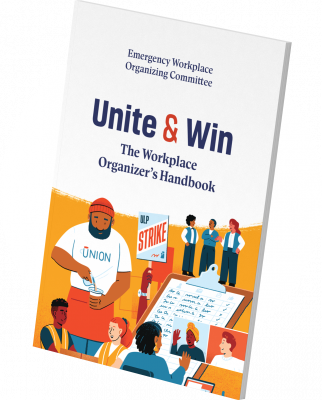for “Unite & Win: The Workplace Organizer’s Handbook”

Use this sample spreadsheet, Your Workplace, and list the first few co-workers you’d like to talk to. Tell us: Why are these the first people you listed?
“Issues of favoritism and unfairness are common at my workplace. So I like to ask, ‘Do you have a favorite supervisor?’ and ‘Do you have a supervisor that you don’t get along with?’ That really leads the conversation to why they have issues. I’ve also had success talking about interactions with customers, or sections and shifts that people like working best. Or talking about how people are coming and going, why they think that is, how they feel about it. I also like to get to know their personal life, whether they have family, if they’re a student, if they have another job. Things that they deal with outside of work that affect them at work.”
Talk to a co-worker you don’t usually speak to or have never spoken to! Bring it back to your next discussion and tell the team how it went! What was hard? What did you do well?
“We started by asking for changes through approved channels. After management ignored our requests, we asked for a group meeting, which was also ignored. When we put forward proposals that management refused to engage with, it helped people realize that unionizing was important. Then we launched a social media campaign and held a rogue public event at the organization’s farmers’ market, where we were visible to consumers and donors. We set up a booth in the middle of the market even though we hadn’t paid for the spot, demonstrating that we weren’t afraid to ask for public support. We asked supporters who came to our table to sign postcards that we mailed into our workplace and posted those up on the bulletin boards and in the breakroom. Some of those supporters were donors.”
What would you say are the most important reasons why you would inoculate your co-workers? What might make you hesitate to do so?
Use the Bingo card on page 45 and ask one person to play the boss. (They get to pick whichever prompt they want from the card.) The other person will play the organizer and will need to think of ways to respond. Try to get everyone to play at least one role.
